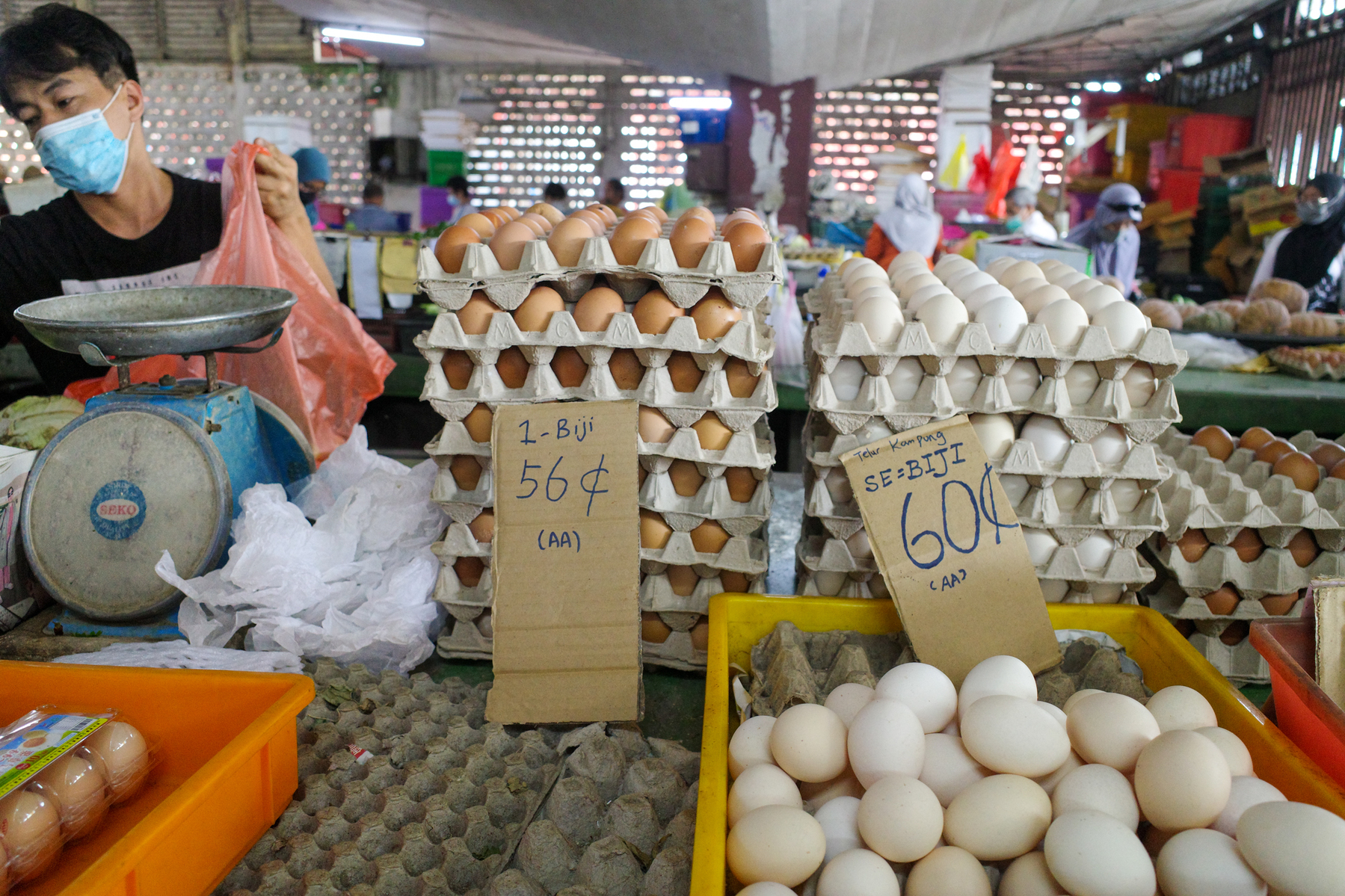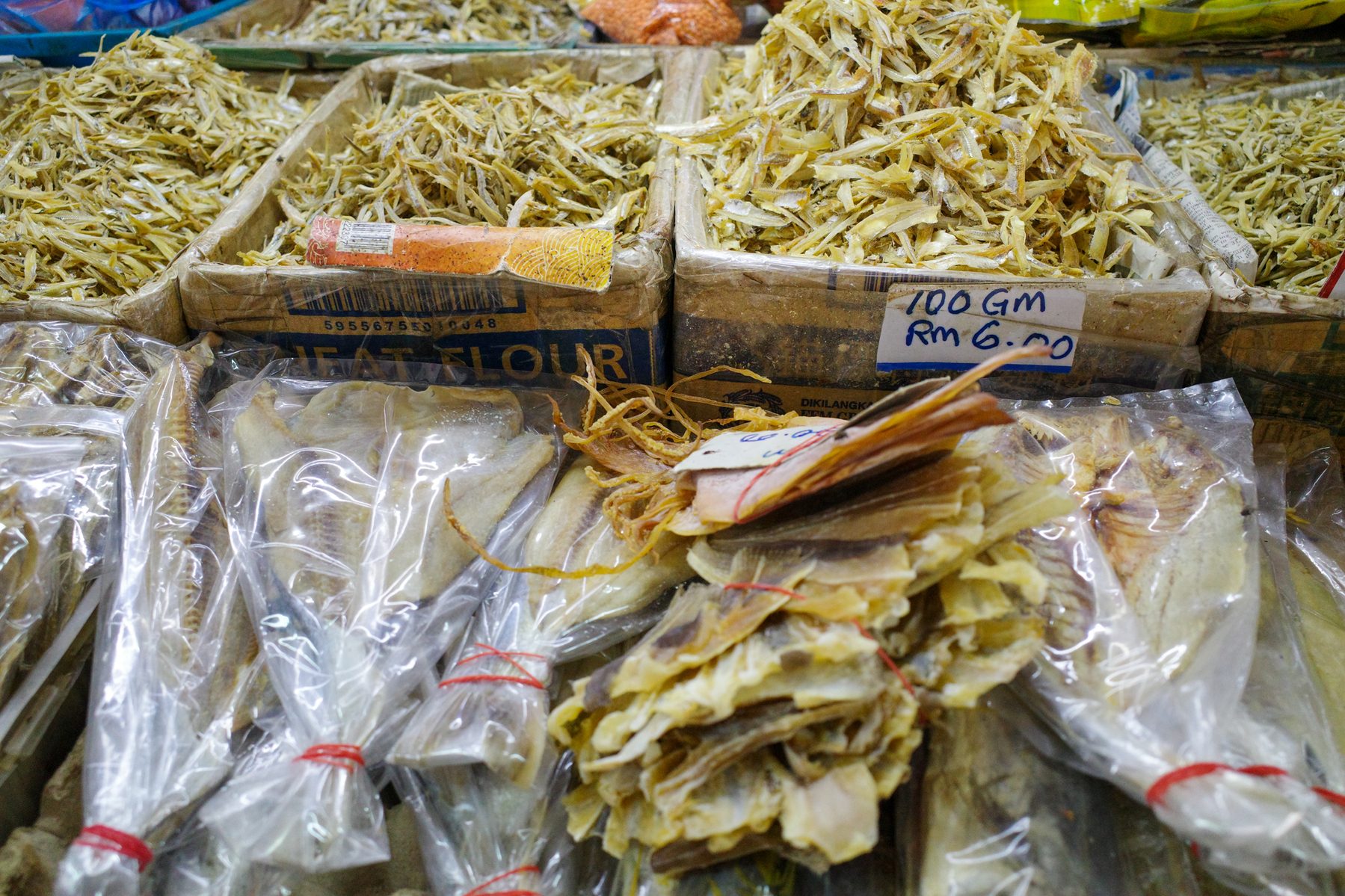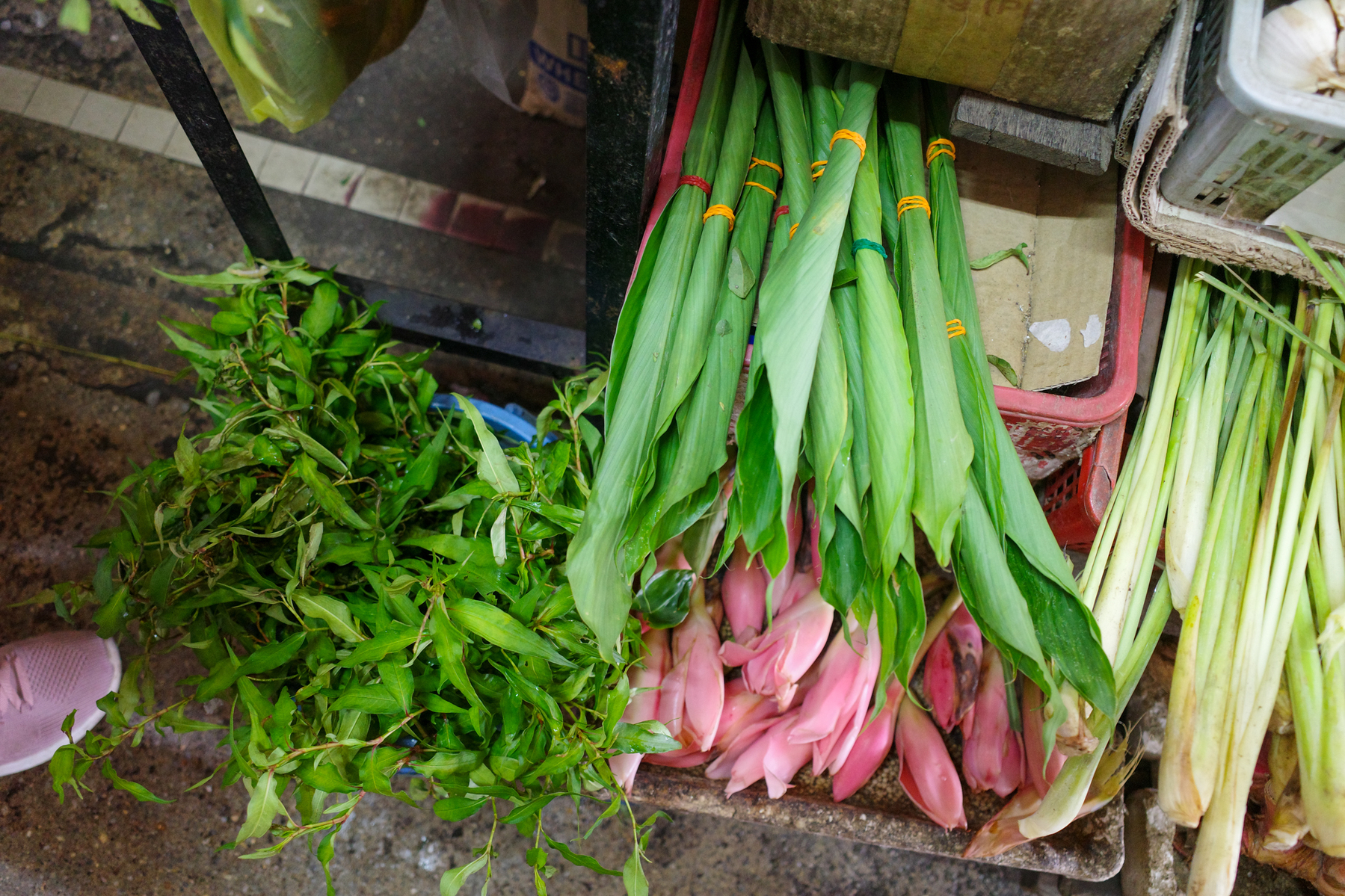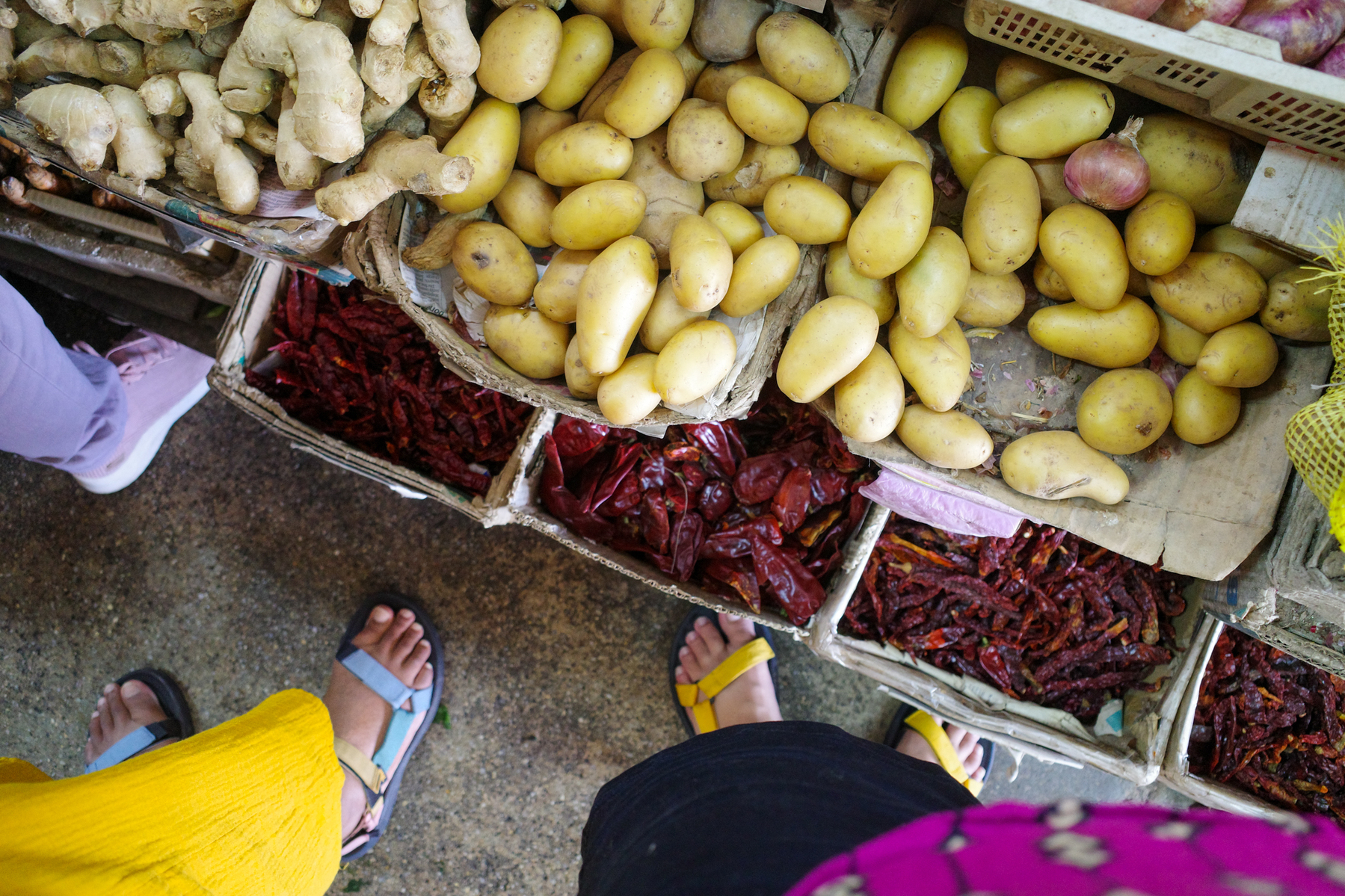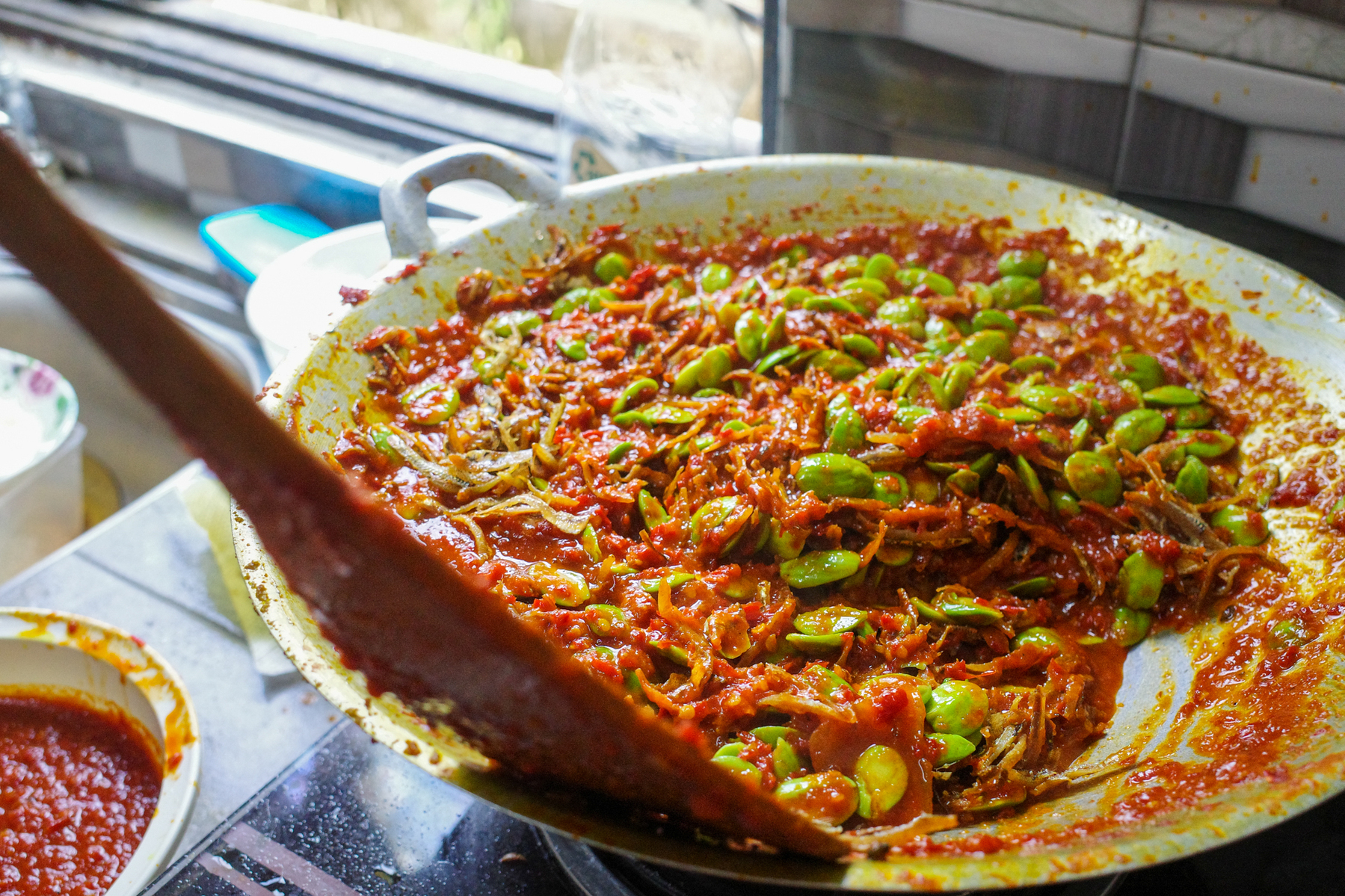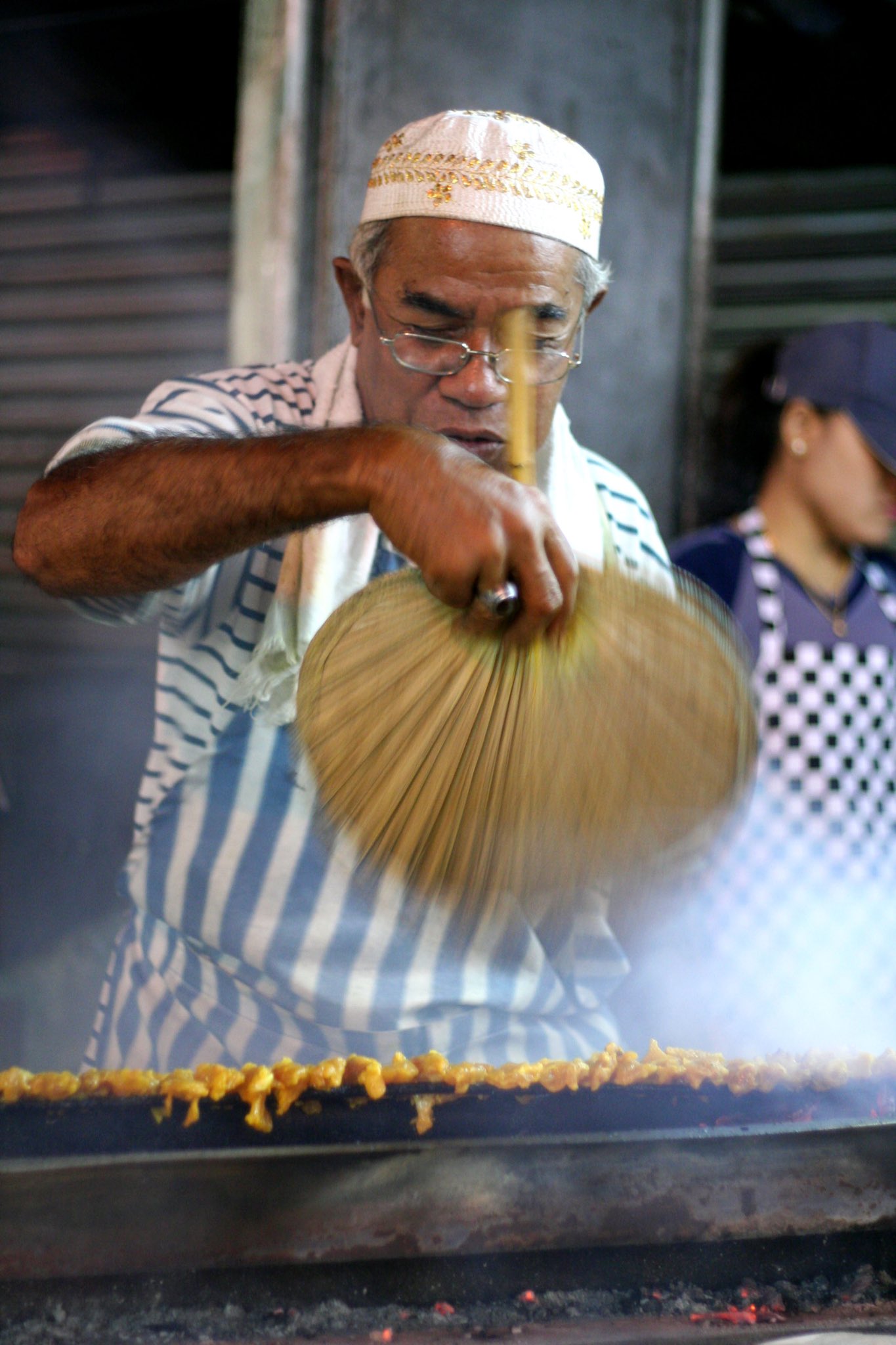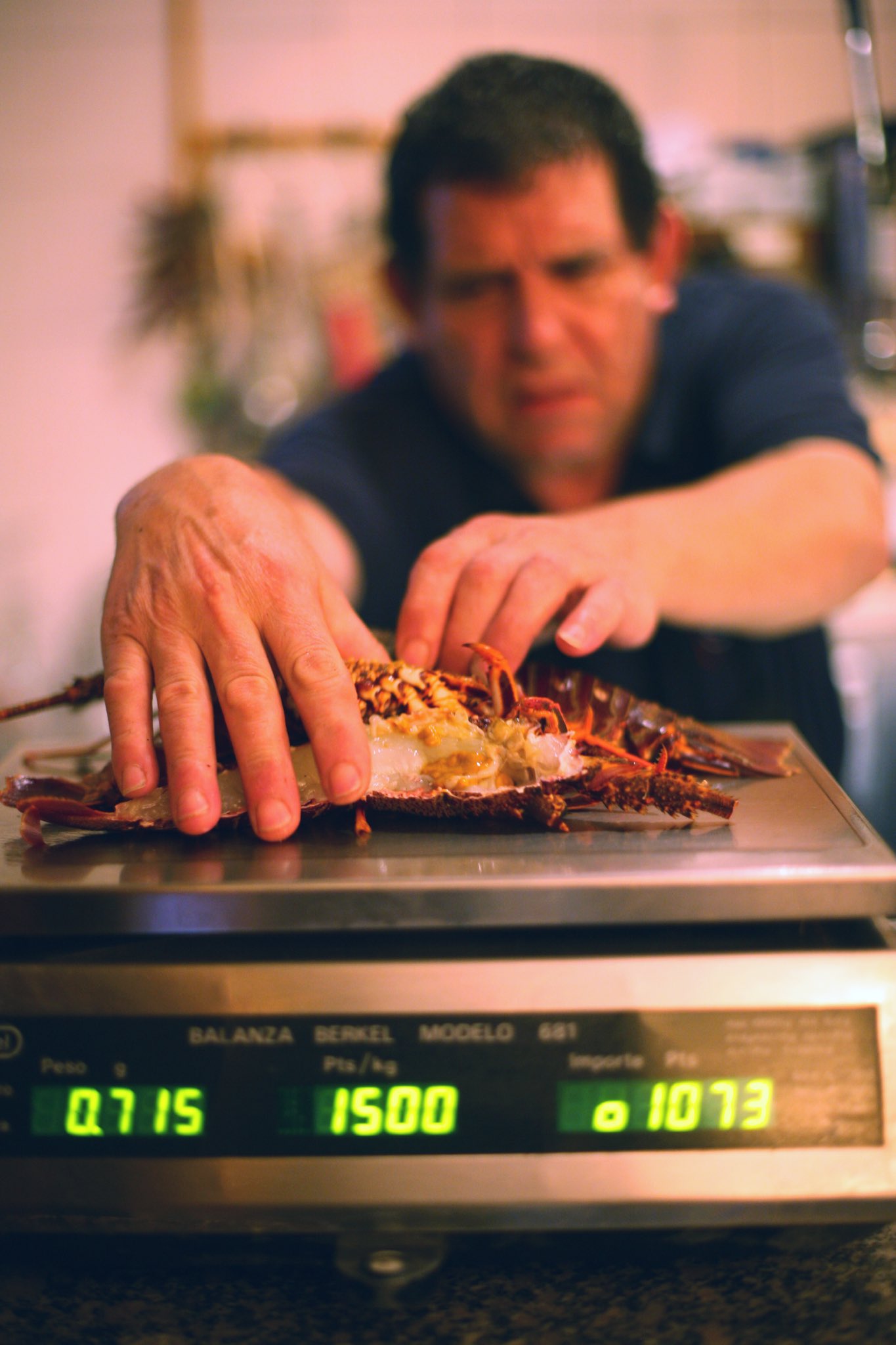-
'Singapore food' is a difficult term. It's hard to put national wrappers around a smorgasbord of different culinary influences. This is why we keep getting into fights about appropriating others' food. Singapore food is Cantonese, Hakka, Hokkien, Hokchiu, Teochew, Malay, Javanese, Sumatran, Tamil, Kerala, Mamak, Punjabi, Bengali, Kristang, Peranakan, Chetty, and many more.
-
We simply consume some of them more than others, in public; and some are more widely available commercially. Others are largely consumed at home.
-
The Singapore food popularized by the tourism board, that appears in movies like Crazy Rich Asians, is only one of many types of Singapore food.
-
When Malaysians say 'it's better in Malaysia', they are usually right, except for when they are referring to dishes that exist in both northern and southern Malaysia. In that case, the Singapore version, usually held up to be the inferior one, is usually only a mirror of the southern Malaysian, usually Teochew, version of that dish. It is not better or worse, it is just different.
-
As Singapore / Malaysia food gets more popular abroad, especially in the US, we're going to have to be prepared to see it transform in ways that we may not always appreciate. Like ube, kaya and pandan is going to go on a similar journey. I'm no longer personally invested in the idea of everyone eating exactly the same version of the food that I like; it's fine to let kaya and pandan become its own thing elsewhere.
-
Gula Melaka (obviously not Singapore food, but used extensively in Singapore) is god tier and will become the next big thing in global pastries and dessert, especially in sweet/salty applications like salted caramel.
-
One of the best aspects of food in Singapore is that many of the world's top food brands already, or will soon, have an outpost here. Some better than others.
-
The breadth of vegan and meat alternatives in Singapore currently is breathtaking. It's certainly changed in this department since I left home. While I'm not vegan, and likely will never be, I appreciate the options that are available. While one might need to go to a midrange restaurant in San Francisco to have Impossible burgers, there are Impossible burgers in convenience stores here. There are vegan options in a lot of local food now, a lot more than I remember. Pretty much every major plant-based or meat alternative or lab grown company is here with a product out on the market. Way more than in the US. And all in one tiny city. I'm excited to try the vegan sashimi that I just saw, and the vat-grown chicken. This is definitely related to the next section on 'how come I can get all of my favorite food in one city now?'
A list of foreign food chains I like in Singapore
#
Burgers: Shake Shack, Five Guys, Carne
South Indian: Murugan, Anjappar, Junior Kuppanna, Ponnusamy, Dindigul Thalappakati
Malaysian Chinese: Go Noodle House, Super chilli pan mee, various Malaysian hawkers at Malaysia Boleh
Taiwan: Sushiro, Mu:, many many boba / bubble tea chains (most of them in fact)
China: too many to name, other than Hai Di Lao there are also Chinese chains for specific regional dishes, like more than two famous chains for say, suancai
Way too many Japanese and Korean chains to list.
Sure, chain food isn't all that exciting and many of them arrive here in a completely bastardized form especially when they are run by a local F&B group that is less good at running franchises. But the ones run by the owners, like most of the Indian and Malaysian chains, make me very glad to have something I love so much all in once place especially in times like these when I don't think I'll be able to travel to those places for longer than I'd like.
So why are there so many chains setting up shop here? I suspect capital flight, and the precarious political situation in Hong Kong as a traditional financial hub. It's also incredibly easy to setup a business in Singapore. While there are some problems with that model, you can definitely draw a direct line from the ease of setting up shop to why we have all of these restaurants.
I love that I can get biryani with seeraga samba rice (the clearly superior rice for biryani) in not just one style, but several: Kongunadu style at Junior Kuppanna, Thalappakati style at Dindugl Thalappakati. I love that I have many, many types of boba to choose from, from hand-brewed tea-forward teas like at Chicha San Sen to black sugar boba abominations with cheese like at Black Sugar or Xing Fu Wang. I love that the noodles I love so much when I lived in KL are mostly here.
Not forgetting individual chefs or restaurant owners who don't have chains, who have simply moved here and are doing what they do best here. I've had very decent Ipoh horfun and Sarawak kolo mee. I'm really liking the boom in Henghua (xing hua) food, after Putien's success. You find these at tiny restaurants (like Yun Heng) and at food courts (like at Malaysia Boleh). We've also recently found a very-close-to-Village-Park style nasi lemak at Uptown Nasi Lemak, Telok Ayer (which is totally different from Singapore nasi lemak).
I hate it when food writers spend too much time talking about how you can get gasp high end food at low end prices. That, I think, is unique to Singapore in some ways because we have a large number of trained chefs and cooks at the many, many hotels and restaurants; and many of them, like chefs and cooks anywhere, want to do their own thing. Our inventory of non-restaurant space, like at hawker stalls or food courts or commercial shop space below public housing, has made it possible. You have always had things like 'Austrian man sets up sausage stand in Chinatown' or 'Japanese couple selling Singaporean Teochew noodles in hawker centre' in the first wave of that. We've also always had stories of 'hotel chef sets up shop in hawker stall'. So I am not, as a food-obsessed Singaporean, surprised by this sort of thing.
What this means in daily life, though, now that I live somewhere with with a well-known but very different food scene, is that you can get fancy dimsum in a place like Yishun. You get French-trained chefs cooking Hokkien mee.
I love that. However, I love more when a new generation of Singaporeans take over, or start, hawker food businesses. It leads to innovations that take the best of our traditions and blends it with our exposure to new things, and makes it entirely new. As a Teochew person, I love braised duck more than.. nearly anything else in the world. A place like Jin Ji where a younger person has started to get involved can now do things like dry duck ramen and still be distinct from when a Japanese ramen master does it. I have never seen duck ramen anywhere else outside of Japan and Singapore and I feel like more people should know that you can have many types of duck ramen in Singapore, including one that is Teochew-inspired.
Does this mean that food in Singapore is not authentic? First, I'd like to banish the idea of authenticity. Nothing is authentic, even in the sourcelands. India, China, and other places we draw inspiration from, have all had food that has come from somewhere else, and no food exists in a vacuum.
But even in the 'authenticity' department we are no slouch. You can get old school Teochew food, you can get traditional East Javanese food (Bebek Goreng Pak Ndut), you can get authentic Kongunadu food (Junior Kuppanna), you can get authentic Chennai style idlis (Murugan). You can get extremely high levels of 'authentic' high end Japanese food for nearly every region, and dish.
When I think about what I miss most about eating in Singapore, especially when I'm cold and hungry at midnight in San Francisco, it looks a little like this:
In my eating-in-Singapore dreams, it is always midnight. I am at Mustafa in June fighting over mangoes with aunties. The cashier asks me what's the big deal anyway about these mangoes. I say it's not just a mango, it's dasheri. After losing at mangoes (the aunties always jab me and they get the best ones), I walk to Desker Road for hot garlic cheese naan, dal fry, palak paneer and kadai chicken. Javid offers me a cigarette. I tell him I don't smoke anymore. He says good, have some elaichi chai. In the morning, my mother has made me a tub of Hokkien chicken wings that her mother used to make, for breakfast. There's at least 2 kilos. I love chicken wings. Love is an understatement. When I've had Filipino food, I can see the Hokkien influence in all of the dark soy sauce and garlic. My Hokkien half is satisfied. Later, for lunch, I want a light Teochew porridge with all of the trimmings: steamed pomfret or rabbit fish. Taucheo. Preserved mustard leaves with olives. I walk around in the heat and sweat it all off. For dinner, I can have great sushi or I can have biryani. With seeraga samba, the clearly superior biryani rice. Then I remember a cocktail costs $25 in this city and I wake up.
So whenever someone not from a major food city moves to San Francisco and says to me, the food scene is so good! I hold my tongue and say... yes, it is, but. I could also be eating in Singapore. In my dreams.
